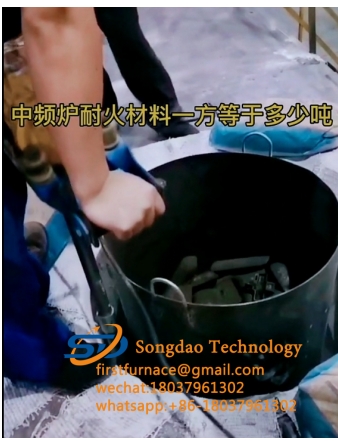- 30
- Dec
What are the requirements for the lining material of the induction furnace wall?
What are the requirements for the lining material of the induction furnace wall?
1. Sufficient refractoriness
Materials with a refractoriness higher than 1580°C are called refractory materials. The working temperature of the lining of the induction furnace is generally lower than the temperature of the molten metal. However, based on the requirements for the life of the furnace lining, the accidental or frequent over-temperature of the molten pool and the molten pool must be considered. The refractoriness used in the cast iron induction furnace and the materials with low softening temperature are often unsafe. As the electric furnace charge for cast steel induction furnace,
Its refractoriness should be 1650 ~1700℃, and its softening temperature should be higher than 1650℃.
2. Good thermal stability
The induction furnace relies on electromagnetic induction to exchange energy. In order to ensure the furnace has a higher electrical efficiency, this makes the furnace lining work with a large radial temperature gradient. In addition, the temperature of the furnace lining is constantly changing due to the influence of charging, tapping, and shutdown of the furnace during the working process of the furnace, and the furnace lining often cracks due to uneven heating, which reduces the service life of the furnace lining. Therefore, as a refractory for electric furnaces, it should have excellent thermal stability.
3. Good chemical stability
The chemical stability of the material is closely related to the life of the furnace lining. The lining material must not be hydrolyzed and differentiated at low temperatures, and should not be easily decomposed and reduced at high temperatures. It should not easily form low-melting substances with slag during the smelting process, and it should not chemically react with metal solutions and additives, and will not pollute metal solutions.
4. Small coefficient of thermal expansion
The volume should be relatively stable with temperature changes, without rapid expansion and contraction.
5. Has high mechanical properties 、
It must be able to withstand the discharge of the in-place charge when the metal is in a low temperature state; when the metal is in a high-temperature molten state, it should be able to withstand the static pressure of the molten metal and the strong electromagnetic stirring effect; wear resistance and corrosion resistance under the long-term erosion of the molten metal .
6. Good insulation
The furnace lining must not conduct electricity under high temperature conditions, otherwise it will cause leakage and momentary circuits, resulting in serious accidents.
7. The construction performance of the material is good, it is easy to repair, that is, the sintering performance is better, and the furnace construction and maintenance are convenient.
8. Abundant resources and low prices.
It is not difficult to see that the requirements for refractory materials for induction furnaces are quite strict, and there is almost no natural refractory material that can meet the above requirements. This requires the selection of suitable refractory materials according to different conditions of use. At the same time, natural mineral resources should be purified, synthesized and reprocessed to make their performance meet the requirements of induction furnaces.

